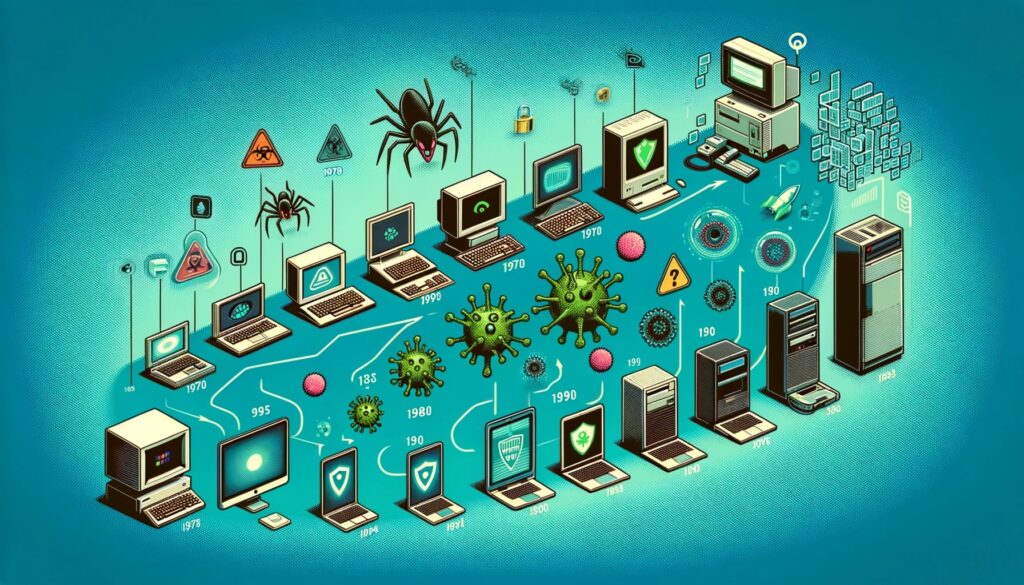In the fascinating journey through the history of cybersecurity, the first antivirus programs constitute a key chapter, starting from the simple concept of protection against computer viruses. The first known “antivirus” was the Reaper program, created in the 1970s to combat the Creeper virus in the ARPANET network. Soon after, the development of personal computers and the emergence of new threats contributed to the birth of dedicated antivirus software.
First-Generation Protective Technologies
Scanning for known signatures – This technique involved identifying unique data sequences characteristic of specific viruses. It was a basic method for detecting malicious software, requiring regular updates to be effective against new threats.
Quarantine and removal – These mechanisms allowed the safe isolation or deletion of an infected file upon detection. This prevented further spread of the infection, protecting the system and user data.
Real-time monitoring – Offering real-time protection by scanning files at the moment of their opening was a significant step forward. Although it was not so common at the beginning, it eventually became a standard in the antivirus industry.
Interesting Facts from Antivirus History
Among the first antivirus programs to gain popularity were Flushot Plus for Macintosh and VirusScan, created by John McAfee for PCs. Both applications debuted in 1987, responding to the growing number of digital threats.
It’s also worth mentioning the Brain virus, recognized as the first computer virus to attack PCs. It appeared in 1986 and infected the boot sector of floppy disks. It presented itself as a form of protection against piracy, while also contributing to the development of awareness about the need for cyber protection.

A Brief Historical Overview
The evolution of antivirus software mirrors the progression of digital threats, evolving from simple viruses spread via floppy disks to sophisticated trojans and ransomware that launch attacks over networks. With the increasing ubiquity of computers and the internet becoming a central aspect of daily life, the significance of antivirus protection has surged. Now, in the age of the Internet of Things (IoT) and artificial intelligence, antivirus programs employ cutting-edge technologies to safeguard against more complex threats.
Summary
The beginnings of antivirus software are not only a fascinating segment of computer science history but also a reminder of the continuous need for protection in the digital world. From simple tools scanning for known signatures, through quarantine systems, to real-time monitoring, the first antivirus programs laid the foundation for the advanced protective software we know today. Their development was and remains inextricably linked with the evolution of digital threats, which means that the cybersecurity industry must constantly innovate to meet new challenges.
The future of antivirus software looks as interesting as its past. With the advent of the Internet of Things, artificial intelligence, and machine learning, cybersecurity faces new, previously unknown challenges. Future antivirus software will need to not only protect against malicious software but also predict threats, adapt to new methods of attack, and protect an increasing number of connected devices.
Education
Education and raising awareness about cybersecurity among users remain crucial. Even the most advanced technologies may prove ineffective if users do not know how to use them or how to protect themselves against basic threats. Therefore, the role of digital education is as important as technological development in the field of antivirus protection.
The history of the first antivirus programs is a reminder of the continuous battle between cybersecurity and cyber threats. It is also proof of how far we have come in protecting our digital world. Remembering our shared history, we can better prepare for a future that will undoubtedly bring new challenges in the field of cybersecurity. The development of antivirus software from its humble beginnings to the advanced protective systems we know today is an inspiring story of innovation, adaptation, and the relentless fight for safety in the digital world.


